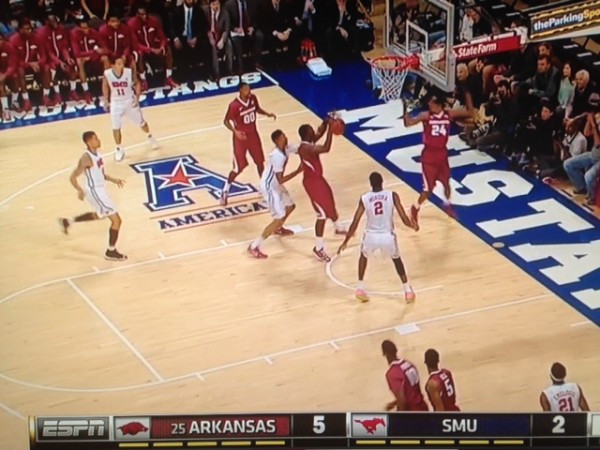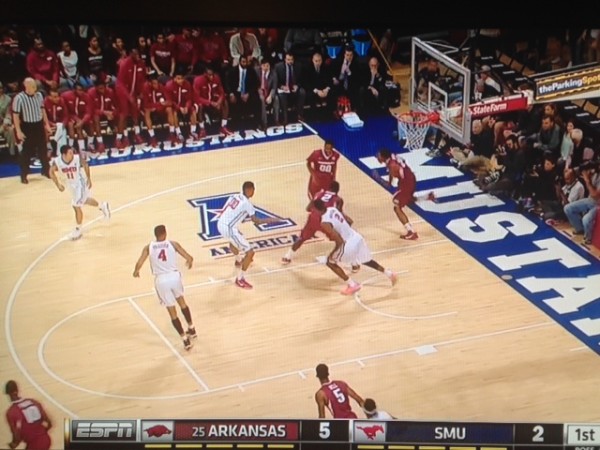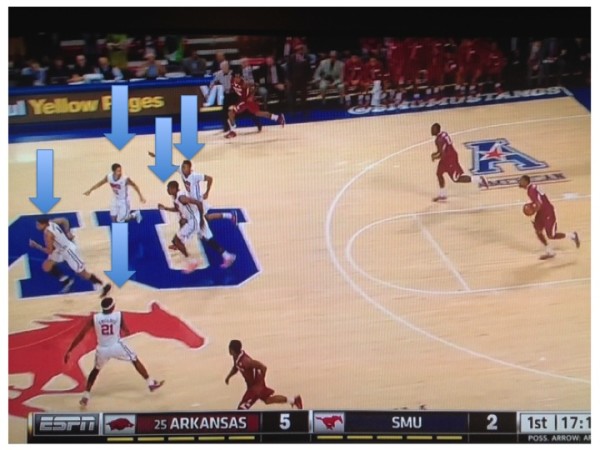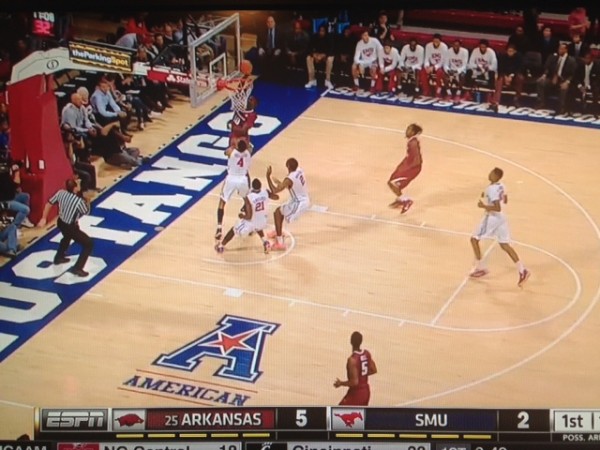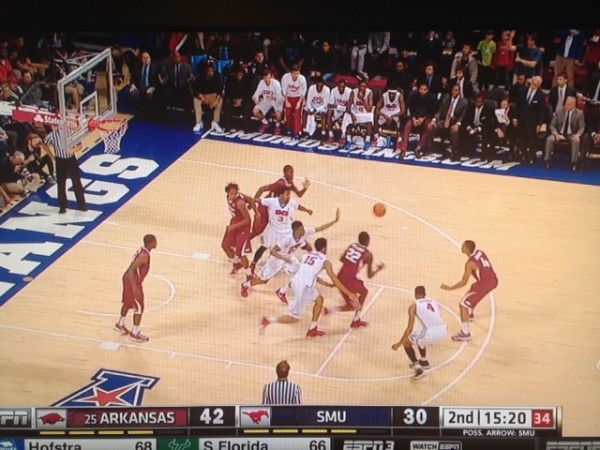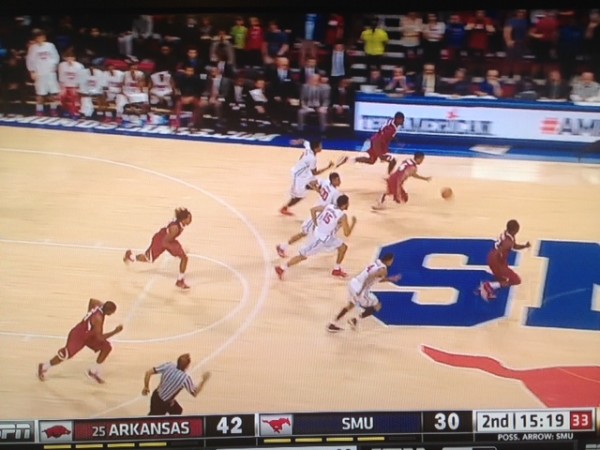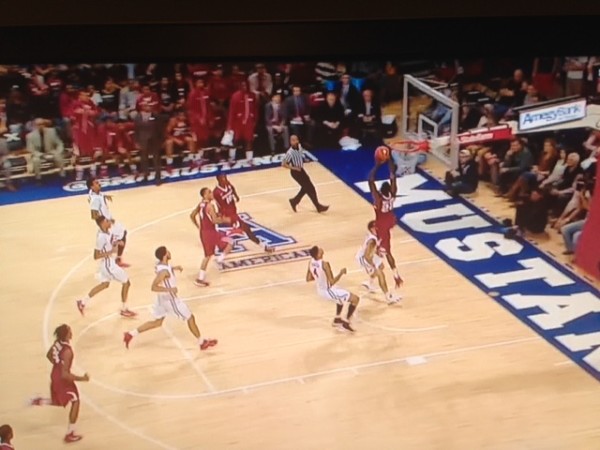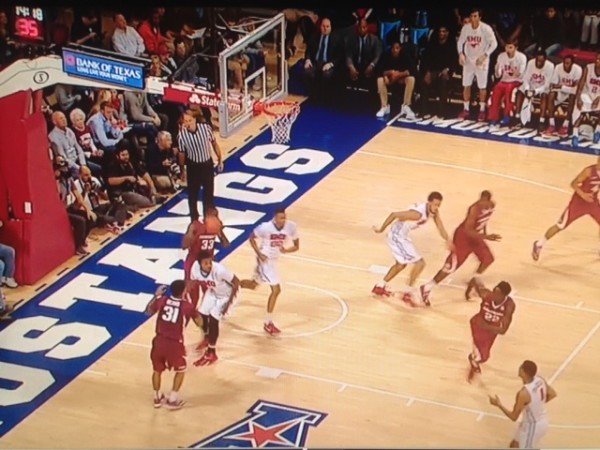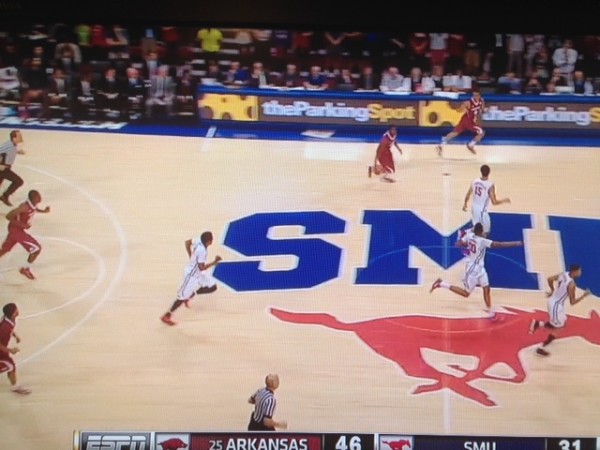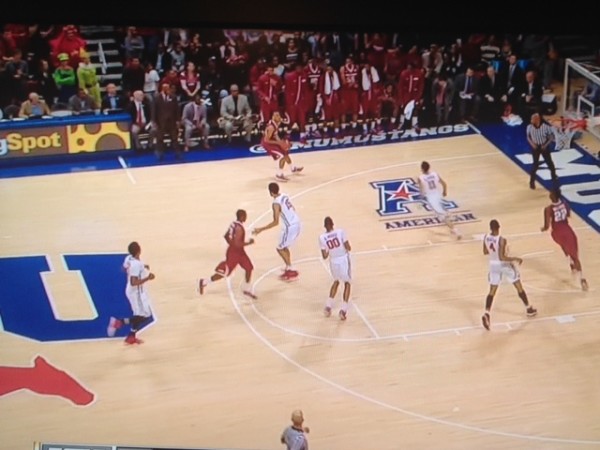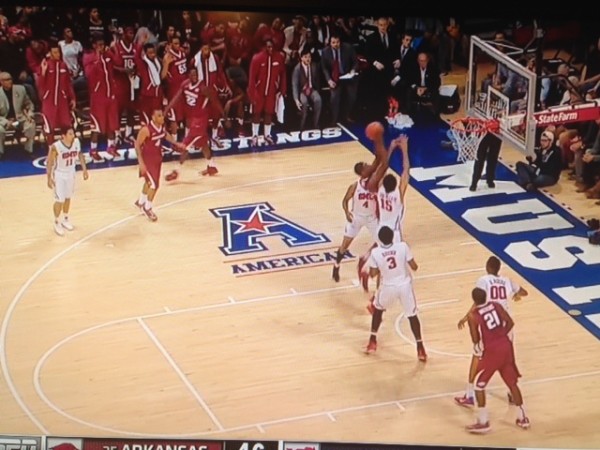Freeze Frame: Can Arkansas Play Fast and Efficiently?
Posted by Brian Joyce on November 28th, 2014As the old saying goes, defense wins championships. Fresh off of a .500 win-loss record and a losing campaign in the Big 12 conference, Mike Anderson’s 2008-09 Missouri Tigers increased its defensive turnover percentage and forced opponents into the lowest field goal percentage of his head coaching career. The extra steals, blocks, and opponents’ missed shots led to better play on the other end of the court too. By virtue of an increase in run outs, the Tigers got easy points in transition also improving its offensive efficiency. Since we’re sticking to worn out clichés, they say the best defense is a good offense. For Anderson and Arkansas, the best offense is in transition, which begins with solid play on the defensive end.
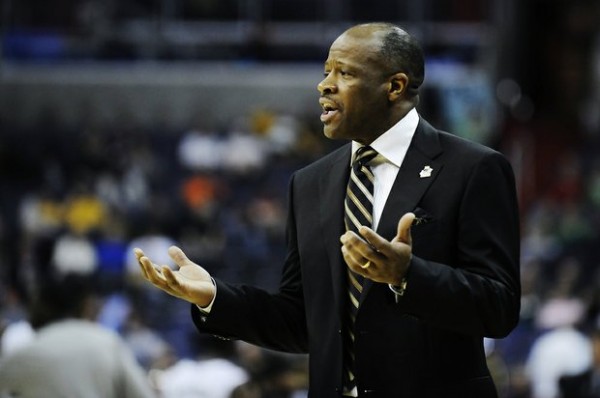
Mike Anderson is looking for his first NCAA postseason berth since coming to Arkansas. (http://grfx.cstv.com).
Anderson’s teams are synonymous with playing fast. However, throughout his head coaching career, only his 2009 Missouri Tigers played fast (top 25 in adjusted tempo per KenPom.com) and remained in the top 25 of adjusted offensive efficiency (per KenPom.com). Not coincidentally, that 2009 Big 12 tournament championship was also the last championship trophy that Anderson has hoisted over his head. In this edition of Freeze Frame we analyze his current Arkansas squad’s recent away win over SMU to determine if the Razorbacks can reach the same level of success that has escaped Anderson since leaving Columbia, Missouri.
Anderson’s system isn’t called the “Fastest 40 minutes of basketball” because of a patient and methodical attack. Arkansas looks to score quickly, averaging just 14.3 seconds per possession, but a quick attack often leads to rushed decision making, poor shot selection, and a decline in offensive efficiency. The Razorback’s offensive efficiency numbers have hovered somewhere near mediocrity during the last three seasons, but so far in the early going of the 2015 campaign Anderson’s club is significantly improved.
The Hogs scored from their half court sets against the Mustangs, but were even more effective in the open court following a missed shot. The chart below, taken from the good work done by the fine folks at hoop-math.com, shows how good the Razorbacks are when they drive straight to the rim and take a shot within the first 10 seconds of the shot clock.
Transition baskets are Anderson’s bread and butter, and Arkansas feasted on easy shots Tuesday night at Moody Coliseum. Arkansas forced SMU into taking bad shots all night, and then looked for the run out after every Mustang miss. The following freeze frames take a look at just how fast Arkansas got down the court after a defensive rebound.
The first play came early in the first half. SMU’s Ben Emelogu misses badly on a mid-range jump shot. Arkansas’ Alandise Harris grabs the miss.
Before Harris can even hand the ball of to Ky Madden to dribble up the court, Bobby Portis (seen in the bottom left hand side of the screen) is sprinting towards the rim.
I count four Arkansas players on the screen and five SMU players, meaning Portis is all alone. Madden looks to deliver a long pass to the 6’11” forward.
Portis gets an easy basket because he looked to run and Madden found him in transition.
The second play comes early in the second half. SMU misses a free throw attempt that bounces back to the free throw line. Jacorey Williams goes after it, until realizing the ball wasn’t going to bounce his way. That didn’t stop him from continuing to push forward.
The Razorback’s Jabril Durham comes up with the ball and all five Hogs take off with the intent to score.
Durham to Williams for the alley-oop, and the Mustangs have no defense for the Arkansas’ fast pace.
In the final freeze frame, Moses Kingsley comes up with an SMU miss.
Kingsley hits Manuale Watkins for the outlet pass, who begins the fast break.
Watkins hits Durham for the open three point jumper. Notice Kingsley hasn’t made it down the court yet, but running the floor will eventually be rewarded.
Kingsley runs in and grabs the offensive rebound, scoring a contested layup over two Mustangs.
Arkansas’ speed and effectiveness beat a quality opponent on its home floor. Anderson won four true road games in the three seasons prior to this one, none of which came against a non-conference opponent. We should not underestimate the importance of going on the road and coming up with a win, something the Hogs haven’t been able to do consistently in previous years. If the Razorbacks continue to win on the road, Anderson may finally end up back in the NCAA Tournament for the first time since coming to Fayetteville. If the Razorbacks can continue to score efficiently in transition, who knows, Arkansas may give Anderson the title of champion once again.






























